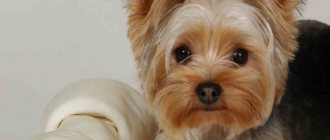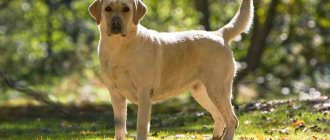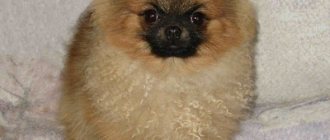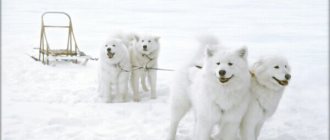History of the appearance of the Jagdterrier breed
This breed is relatively young. Its formation dates back to the period of the 20s of the 20th century. At this time, the restoration of the once popular fox terriers began. The goal was to breed an animal that was as passionate and vicious as possible towards the beast. The basis was taken from dark-colored Foxes, which were crossed with other medium-sized terriers. To obtain the necessary hunting qualities, the following dogs were used:
- pinscher;
- dachshund;
- terrier;
- fox terrier.
Creation of the breed
Fox Terrier breeder Walter Zangenberg is considered the creator of the breed. In 1923, he began to implement his idea by purchasing unsuccessful black-and-tan puppies from a Munich fox terrier breeder, from which the creation of the breed began. In the beginning, breeding work was carried out through inbreeding, i.e. related mating. Then, to improve the characteristics, the breeders crossed twice with Old English Terriers, whose hunting talent is at a high level.
After several years of work, the desired dog was obtained. The breed was named the German Hunting Terrier (Deutscher Jagdterrier). Its further development went like this:
- 1926 – creation of the first German Jagd Terrier Club;
- 1927 – the first exhibition with the participation of the Jags;
- the end of the 30s - recognition of German terriers as one of the best among “hunters”.
Formation and recovery after World War II
After the completion of the formation of the breed, the Second World War intervened in its development. It divided Germany into two separate states - the Federal Republic of Germany and the German Democratic Republic. In the western part, a sufficient number of berries have been preserved, which were used for independent breeding. East Germany suffered more severely, so the breed had to be collected bit by bit. Each yag was kept under strict control. They were not subject to export from the country.
FCI recognition
In 1954, the German Hunting Terrier breed, bred in Germany, was recognized by the Federation Cynologique Internationale (FCI), which established all the necessary standards. Representatives of the breed from the GDR were not represented. In the early 1950s, the first German Jagd Terrier came to the United States, but the animal did not cause much excitement among hunters. The reason is that they have their own favorites - Jack Russells and pit bulls. The breed reached the USSR only in the early 1970s during the first “warming” of the international climate.
Briefly about the German Jagd Terrier breed
The idea to develop a more advanced version of the fox terrier arose before the First World War. The most aggressive hunting dark terriers were specially selected for crossing. Dr. Lakner was actively involved in selection. Several types of English Terrier were also used to develop the breed. By 1934, it was possible to obtain about two hundred individuals of German Jagd Terriers. After World War II, the number of dogs decreased, and the results of breeding work had to be restored over more than ten years.
The animals were officially registered in 1954. The dog spread throughout Germany, Czechoslovakia, and later appeared in the Soviet Union. By the 80s, during selection, the exterior of dogs was brought to the modern version. The dog became less aggressive. In the 90s, Jagd Terriers spread throughout Russia, Ukraine, Belarus and other CIS countries.
Appearance of the breed
This is a short dog with well-developed muscles. Her height is from 33 to 40 centimeters. The dog's weight reaches 10 kilograms. The animal must be light and active in order to hunt and move in the hole. The animal's head is wide, slightly flattened with a smooth transition from the forehead to the nose. This breed has dark oval eyes with deep set. There are triangular ears on the head. The Jagdterrier has a long body with a wide chest. His paws are small, but muscular.
Animals often have short, coarse hair with a thick undercoat. There are Jagdterriers with longer hair. The color of the breed is black, brown, gray with yellow markings. The spots are located on the head, paws and tail area. The tail is not completely docked so that the hunter can pull the animal out of the hole. There is a mustache and goatee on the muzzle.
The dog's movements are sweeping and confident. There is no timidity or shyness in this dog. This is a brave animal that always rushes after prey and tries to grab the beast by the throat. The German Jagd Terrier is ready for active movements and great physical activity. If the animal is lethargic and lacks energy, then this may be a breed defect.
Dog character
This dog is distinguished by fearlessness, explosive temperament and rage. The animal tries to take a dominant position. Its owner must have authority and a strong character in order to cope with the pet’s temper. It is not suitable for a timid dog owner or a person with an unbalanced psyche. The German Jagdterrier is not very fond of guests in the house and is suspicious of strangers. He doesn't like it when strangers behave aggressively or defiantly.
The animal does not always get along with children and will not tolerate being pulled by the tail and ears. He finds it difficult to tolerate the noise and games of children. For peaceful coexistence, children should be taught to respect it, and the animal should be properly trained and socialized. The dog does not get along well in the same territory with cats and can attack dogs in the house. Training by a specialist will dull the hunting instincts, soften the situation, but will not suppress them completely. It is best if there is only one animal in the house.
On the hunt, this is a fearless animal, completely surrendering to its instincts. He enthusiastically pursues prey and easily enters into battle with large animals (bear, boar). When an animal does not recognize the authority of the owner and does not obey him, the dog may even die in such a fight, because he is not used to retreating. In such a situation, the owner needs to pull the dog away, restraining his tireless temper.
His aggressiveness is a good quality for protecting family and home. He will protect loved ones from the threat, not paying attention to the formidable appearance of his opponent. But sometimes you should slow down the dog in your impulses. The dog often simply stops letting all strangers into the house. Dog trainers will help you overcome the problem. Puppies should be socialized from an early age so that they are less aggressive towards people.
This dog does not have pronounced companion qualities. The owner must understand that this is a serious breed with working qualities and a wayward character. Despite its size, the dog should be raised, trained and socialized. With proper upbringing of an animal, it will become affectionate and devoted, and will play a lot with people. The German Jagd Terrier will protect children and the owner. This breed has high mental abilities. Jags are talented, but they need the support and approval of their owner. If you spend little time on them, the dog withdraws into itself and becomes uncommunicative.
Representatives of the hunting breed are used to moving a lot, so a homebody owner is not suitable. Until old age, dogs move a lot. They need long walks with physical activity. If the energy is not spent, then the jags turn into evil animals that destroy everything around them.
What does a German Hunting Terrier look like?
The priority in the selection work was to breed a dog with ideal working qualities, so the result of selection was reflected in the animal’s exterior. A striking difference is the pronounced sexual dimorphism. A strong and muscular constitution is more typical for males. Females are small in size, their physique is more graceful. Their weight ranges from 7.5 to 8.5 kg. Males have a body weight of 9-10 kg. The height of the German Jagdterrier reaches 33-40 cm. Regarding the type of coat, representatives of the breed can be smooth or wire-haired.
Wirehaired
The coat of this type of yagd is denser, tougher and elongated. The guard coat forms decorations in the form of a beard and small fringes. This is an external difference from smooth-haired individuals. The wool is coarse and feels that way to the touch. The Wirehaired Jagdterrier looks disheveled in appearance. In addition to a tousled beard, the pet has elongated hair on its belly and paws. You can't help but notice the animal's charming eyebrows.
Smooth-haired
Unlike the previous type, smooth-haired jags have dense short hair. It has no undercoat and lies very close to the body. The fur is evenly distributed over the entire body of the animal. It is distinguished by a pronounced natural shine. Smooth-haired dogs look neater and smoother. The standard identifies an intermediate option - the brocken, which does not have completely smooth or hard hair.
Breed characteristics
Due to their appearance, German Jagdterriers are often confused with pinschers, small Dobermanns, and miniature pinschers. This problem is associated with the black and tan coat color of the animal. A striking difference between Yagds and these breeds is the manifestation of hunting, rather than guarding qualities. The difference can also be found in the body structure of the animal. Developed muscles, strong bones, dense but elastic skin - these are the main features of the German Hunting Terrier.
- Effective suppositories for thrush
- 6 ways to tighten sagging skin
- How to increase erection
International Canine Organization standard
This is a small compact dog. The physique is proportional, square type. An important condition in the standard is that the chest circumference exceeds the height at the withers by 10-12 cm. The animal's tail is traditionally docked, leaving only 2/3 of the length. This is done for ease of grip when pulling the dog out of the hole. The standard also defines other characteristics of the German Hunting Terrier:
- The head is wedge-shaped, flattened between the ears, the cheekbones are slightly defined, the cheeks are flat.
- The muzzle is strong and powerful, tapering smoothly from the tip of the nose, which in most cases is black.
- The lips have a black border and fit tightly. The jaws are well developed and strong. The teeth are large with a scissor bite.
- The ears are triangular, small, set high, hanging on cartilaginous tissue.
- The eyes are oval-shaped, deep-set, the iris is dark brown, the eyelids are dry and dense.
- The neck is of medium length, has a pronounced scruff and well-developed muscles. It transitions smoothly into a pronounced withers.
- Limbs. The front ones are parallel and are distinguished by strong bones and lean muscles. The hind limbs are set more widely apart and have pronounced knee joints.
Coat type and color
According to the breed description, the coat of the German Jagd Terrier can be hard or smooth. Regardless of its type, the color is standardized. The main color can only be black, dark brown or black and silver. The Jagdterrier breed has some color features:
- light tan markings are required on the head, muzzle, sides, belly, chest and lower legs;
- white spots are not considered a disqualifying sign only on the chest and fingers;
- Markings near the eyes in the form of a mask are allowed.
Purpose of the German Terrier
Initially, the Jagdterrier dog breed was bred for hunting. The animal was obliged to help the hunter when catching the animal from the hole. These include:
- badgers;
- foxes;
- raccoons.
A good hunting result can be obtained if you use a yagda together with another representative of this breed or a dachshund. They can drive down not only a burrowing animal, but also a larger one, for example, a wild boar. Today, the hardy German Terrier is often used as a common gun dog for hunting foxes and hares and serving shot game. The pet is able to destroy rats, mice and moles. For this reason, the German Terrier is a multi-purpose animal. It is often kept as a pet.
Breed characteristics and character
Fearlessness, intelligence, determination, tirelessness - all these qualities are inherent in the German Jagdterriers. This breed is characterized by a life of hunting. She is not afraid of new conditions and long hikes. For this reason, on every walk you will have to deal with the manifestation of hunting instincts. When the terrier sees a cat, it goes into “chase and neutralize” mode. At this time, the dog may not respond to any commands from the owner.
Dog Temperament
The breed has an assertive temperament. The pet is trying with all its might to fight with the owner in order to gain more and more new positions. As the dog grows older, he may not even be embarrassed to use his teeth for this. The almost complete absence of fears, which makes it difficult to control the animal, explains the bad reviews about the breed. Experienced hunters, on the contrary, adore this “biter”. With proper training, the character of the animal is revealed from new sides - clarity in work, discipline, reliability. The temperament of a pet is accurately described by the following qualities:
- Jealousy. The German Jagd Terrier does not tolerate the presence of other animals in the house, except dogs of the same breed.
- Love of freedom. The Terrier constantly needs to be on the move. Endless attacks, jumping and running can cause discomfort to everyone at home.
- Wariness. Yagdas do not allow strangers near their home and owner.
Description of the breed
Jagdterrier dogs are exclusively working dogs. She does not need frequent human attention, is not able to lie still and live without her favorite pastime - hunting. Germany became the birthplace of Jagdterriers. The dogs were bred in 1930 and are intended for hunting.
The Jagdterrier has developed the necessary qualities for hunting - excellent sense of smell, reaction and limitless endurance. The breed standard was introduced in 1981; dogs were brought into the country already in 1970. The character of the Jagdterrier turned out to be difficult. The dog recognizes its owner exclusively and will show indifference or aggression towards strangers. The Jagdterrier dog is considered difficult to train; the dogs require an experienced, persistent and strict owner.
There is a lot of controversy about the origin of the breed. The first scientists believe that Old English terriers are involved in the selection, the second say that there is a connection with Welsh terriers. The Jagdterrier's coat is thick and coarse. Wire-haired dogs have slightly longer hair on the body and legs than smooth-haired dogs, and there is a beard.
In addition to excellent hunting characteristics, the Jagdterrier has developed guard instincts. Dogs are amazing and loyal to their owners, but remember, animals can pose a threat to strangers and animals. It is better to use the dog for its intended purpose - in hunting.
Caring for a Jagdterrier
Caring for the Jagdterrier breed will not take up a lot of free time. The breed only requires proper coat care. It is necessary to walk frequently, and when keeping a dog in contact with wild animals, vaccinations and taking anthelmintic drugs are simply vital.
Anti-worming treatment that is not carried out at an early age will greatly affect the dog’s health in the future, resulting in intractable diseases.
The dog is cared for during walks and games. When caring for fur, do not forget to clean the animal’s ears and eyes. Nail trimming, flea treatment, and veterinary examinations will be required.
Jagdterrier puppies
The German Jagd Terrier has become widespread in Russia, so buying a puppy will not be difficult. It is recommended to contact specialized nurseries to reduce the risk of purchasing a puppy with behavioral problems or genetic diseases. When choosing a puppy, you should adhere to the following recommendations:
- take a closer look at the pet’s parents, in what conditions they were raised, health, color, appearance, mental stability;
- the puppy should look shiny, well-fed, be nimble and energetic;
- a good hunter will be the pet that actively escapes from his hands, tries to playfully attack, and barks;
- a more phlegmatic and calm baby will adapt well to the apartment;
- The best option is the puppy that ran up to you when you made your choice.
Where can I buy
A purebred and healthy puppy can only be purchased from trusted nurseries. You should not contact random sellers. Only professional breeders care about their charges and their working qualities. The following nurseries have good reviews:
- “Round Lake” (www.yagdt.ru) is a national breed club located in the Moscow region, the kennel’s wards are participants in exhibitions and champions of competitions;
- “Jaws on Legs” - Tver;
- St. Petersburg Jagd Terrier Kennel;
- “Universal Soldier” - St. Petersburg.
How to properly raise a pet
Due to the specifics of the German Jagd Terrier, its upbringing should be considered in conjunction with training the dog to hunt game. It is also taken into account that the dog has a complex character. Stubbornness and malice complicate the education process. In addition, due to their hunting instincts, dogs often decide for themselves what to do in a particular situation. Training requires constant control and manifestation from the owner of his will and to some extent rigor, but without physical influence.
Early socialization
It is necessary to start training from a very early age immediately after the pet finds itself in a new home. With proper training, the dog will learn all standard commands. At the stage of early socialization, a person must support the puppy, teach him not to be afraid of other dogs on a walk, car horns, the noise of home appliances and the roar of trains. The attitude of encouragement should be kind, but restrained. This applies to cases when the puppy was obedient on the street, was not afraid of a huge dog and did not pull on the leash.
- How to survive sudden weather changes
- 5 part-time jobs for retirees who don’t have enough of their pension
- How can a working pensioner receive pension indexation?
Training and coaching
In addition to the usual training activities, the German Jagd Terrier needs training. It is important not to rush in this matter. At the age of six months, the dog can be introduced to a fox, a raccoon, and by one and a half years - to a badger. Training may require trips to baiting stations. At an early age, it is recommended to provide your pet with a mock-up hole in the dog area. It is necessary to encourage the animal to climb on this simulator.
Relationships with strangers and other animals
It is not typical for jags to show affection and goodwill towards other pets. Ferrets, chinchillas, rats, parrots and hamsters are prey for dogs, so you need to be careful when getting such pets. Yags gradually get used to another cat or dog. A positive response to good treatment from family members or guests does not guarantee obedience. The animal needs to be given time to get used to it and show a positive attitude. Then the dog will stop being suspicious of guests.
Common mistakes in dog training
What's going on? Why doesn't a grown dog obey commands?
The first mistake is that the trainer and dog owners mistake ordinary puppy addiction for “obedience.” The puppy is still small, not confident in its abilities and needs protection. He is not yet ready to go out and explore the world around him on his own. That's why he doesn't run away and seems to obey.
The second mistake is even more common. It applies not only to puppies, but also to adult dogs. The fact is that executing control commands is the same “abstraction”, a formality for our dogs, as quadratic equations and logarithms were for most of us in mathematics lessons at school.
As has already been said in many of our publications and articles (and we never tire of repeating this postulate again and again), control commands do not lead the dog to satisfy the needs of life and do not lead to the realization of the instincts of a social predator; for it they are complete nonsense.
Our dog (and especially the puppy) strives to get to know this world, to learn to achieve its dog goals. Instead, we command her to “Sit.” For what? Doesn't she know how to sit? Or do you want to create barracks order in your apartment - life “according to the rules”? But, according to my father, even in the army, when a sergeant forces a soldier to do thirty push-ups, he uses it as punishment, not as development of the soldier's physical abilities.
The third mistake made by all sports trainers is the incorrect interpretation of the hereditary emotional aggression of leader dogs. Puppies that growl at their owners and bite their arms and legs begin to be punished, considering this to be abnormal behavior: “Since I feed the dog, that means I am the Leader/Chief/Senior for it” - this is what 99.99% of all dog trainers and owners think. They do not understand that a leader dog was born to “conquer” this world and the first with whom it begins to fight for a leading position are its owner and his family members! And when the owner of the leader dog takes it to the training ground, they are both driven out of there, since they do not fit into the “decent” society of dogs with average and low working abilities.
Unfortunately, all this leads to the fact that dominant dogs, leader dogs, are first beaten and then disposed of. At best, they are placed in an enclosure and used as breeders.
Care and maintenance
The German Jagd Terrier is low maintenance. It is not recommended to bathe them often, only if they are very dirty. For smooth-haired representatives, it is necessary to use shampoo that does not dry out the skin. You need to brush your pet weekly with a brush. Ear wax needs to be checked and cleaned regularly. To wipe the eyes, use a cotton pad soaked in chamomile decoction. Nails should be trimmed as they grow.
Walks within the city
The psychological comfort of the animal depends on a large amount of movement. For this reason, jags are not suitable for those who like to spend a lot of time in front of the TV. An animal in urban living conditions should receive exercise at least 2 times a week. It involves going out into nature, various tests, for example, an artificial hole, a blood trail, and exercises on the playground. Within the city limits, you need to walk your animal in special dog parks.
Maintenance in a country house
If the animal is expected to live in a country or private house, it is worth providing a high and strong fence with a deep foundation. So the German Jagd Terrier will not be able to make his favorite dig. Living in your own home for a representative of this breed is considered optimal. The animal requires a spacious enclosure. Even if it is present, the pet needs to be provided with regular long hikes with active games and training.
Features of keeping a dog
Since the size of the German hunting terrier is quite miniature, it can live both in apartment conditions and in a private house with a garden area.
In order for the owner and dog to live in harmony, it is necessary to take into account a number of features:
- Toys – when kept indoors, to prevent the dog from damaging the furniture, you should acquire a large number of toys.
- Walking - active representatives of the breed need long and systematic physical activity. If hunting with a Jagdterrier is not possible, then it is recommended to go for long runs with it in the fresh air.
- Presence of animals - since it is difficult to overcome the hunting instinct, it is better not to have a dog in apartments where pets already live.
- Fences - if the dog lives in a private house, where in the summer it freely goes out into the yard, the garden plantings should be protected with fences, and a deep foundation should be poured under the external fence.
Hunting with Jagdterriers
The German Jagd Terrier is a versatile hunter. He will be a good assistant in hunting birds, hares, burrowing animals, ungulates and even wild boar. Jags are most valued by huntsmen. The breed is intended for burrow hunting, in which it is especially successful. The downside is the animal's stubbornness, which often leads to the death of a dog that is not ready to give up on its goal. Hunters identify several other problems when working with berries;
- because of malice towards the beast they spoil it;
- show aggression towards other dogs and people;
- cannot work in deep snow;
- They get tired quickly when working in dense bushes and reeds.
Training and education
Despite his stubbornness, the terrier has good intellectual abilities. He is easy to train. It is important for the owner to find an approach to the dog so that it accepts the authority of the owner and obeys him. Motivation should be interesting for the German Jagd Terrier. When training, the owner will have to be persistent and stubborn.
Repetitions of the fixed material are carried out every day, but students are recommended to conduct short lessons. It is important that the person is patient and communicates positively with the dog during training. Pets of this breed are confident in themselves and do not tolerate tyrant owners who yell at them for no reason and treat them cruelly.
The animal's hunting instincts are strongly expressed, so after changing teeth the dog is taught to make a grip to hold the game. By 12 months, puppies stop playing with each other and begin to hunt other animals. When walking, the dog will easily rush at another dog or cat, so you should not let children under the age of ten take him for a walk. Even while hunting, he can grapple with another animal over his trophy while the owner has turned away or walked away a few steps.
Due to the irrepressible nature of the jags and their activity, the owner will have to devote a lot of time to raising a working dog. A hunting dog must be able to find a bird by scent and follow the tracks of the animal. Jagd must be able to work on bodies of water. He can find prey by blood, chase wounded animals, and bring them from the forest or lake. He must pull the game out of the hole and not be afraid of shots.
When training on the “ground”, it is important to teach the animal to lie down, waiting for the owner, and to walk without a leash next to the person. When fired, a properly trained dog does not shy away, does not bark, but simply remains in the indicated place. Classes begin with teaching the usual basic commands (“Fu”, “Place!”, “No!”).
It should be baited with game from the age of eight months. They are trained into burrows using artificial analogues. To do this, the owner should visit baiting stations at least once every seven days. The dog must master quickly entering the hole, moving inside it, barking and other elements. During the first year, the pet is trained to fetch and pick up animal tracks. Dogs are introduced to horses at the age of two. Stubbornness and the tendency to make your own decisions when hunting should be encouraged. The animal is slowed down by excessive dedication and courage. She sometimes overestimates her size and capabilities.
How and what to feed the Jagdterrier
The owner of a yagda has two options for feeding his pet - special food or natural products. In the second case, the majority of the diet should consist of cereals, vegetables and meat. There must be clean water in your pet's bowl. In general, the animal’s diet consists of the following products:
- meat, beef broth is recommended, not veal;
- offal – heart, kidneys, stomachs, lungs;
- fermented milk products – yogurt, cottage cheese, kefir, fermented baked milk;
- cereals – oatmeal, rice, buckwheat, millet;
- vegetables - boiled potatoes, beet tops, carrots, zucchini, cabbage, sorrel, greens.
An adult dog needs to be fed 1-2 times a day. For pregnant or lactating bitches, it is recommended to increase food intake up to 3 times. When using dry food, you need to choose only high-quality products. These should be premium and super-premium categories. In winter, portions are increased if the dog is kept outside. Clean snow can be used instead of water.
Features of feeding puppies
Small berries need to be fed more often - up to 5-6 times throughout the day. Food should be boiled, without salt and fat. It is forbidden to give sweets, fried, fatty and spicy foods. The puppy's diet includes low-fat cottage cheese, pieces of meat with broth, milk with a spoon of honey, meat scalded with boiling water, and greens. Yagds up to 4 months can be fed 4 times a day. A diet of vegetables and cereals is recommended for them. Milk is given only in the evening or in the morning.
Dog food
An individual menu is prepared for Jagdterriers. You can feed the animal with high quality feed or natural products. A natural diet should include lean meat and broths made from it (turkey, beef). You can add offal, low-fat cottage cheese, kefir to the menu. Yogurt without preservatives, oatmeal, and cereals are introduced into the pet’s diet. A hunting dog can be given rice, buckwheat, and millet. The diet is enriched with fresh fruits and vegetables. Milk is given only to puppies. As the dog gets older, it is recommended to switch the dog to fermented milk products with low fat content.
It is not recommended to feed your dog veal and udders. Yags are not given semolina porridge, bread, sweets, or food with added spices. It is not recommended to feed them river fish, pork, lamb, and peas. You should not give them potatoes or beans. The diet should be balanced. It is recommended to supplement the menu with oatmeal with kefir, boiled fish, chicken yolks, and kelp. The diet includes young nettles and wild mint.
Puppies should be fed five to six times a day. From the age of four months, the number of feedings is reduced to 4, after eight months they are increased to two. If the puppy falls on his feet, this does not mean that the dog is tired or malnourished. This is a serious symptom that is often provoked by intoxication, a virus or dysplasia.
Health and hereditary diseases
A distinctive feature of the German Jagd Terrier is good health and strong immunity. The breed is one of the healthiest in the world. Its representatives rarely get sick. There are no genetic defects, because inbreeding, i.e. inbreeding was allowed only at the initial stages of selection. Even under such conditions, timely vaccination against all diseases is necessary. This is especially true for rabies.
With proper care, the average life expectancy of berries is 14-15 years. Some representatives even live up to 20 years. The only breed disease is Ehlers-Danlos syndrome, or dermatorexis. This increases the fragility and vulnerability of the skin. The peculiarity of yagds is that they retain their unique working talents until old age.











